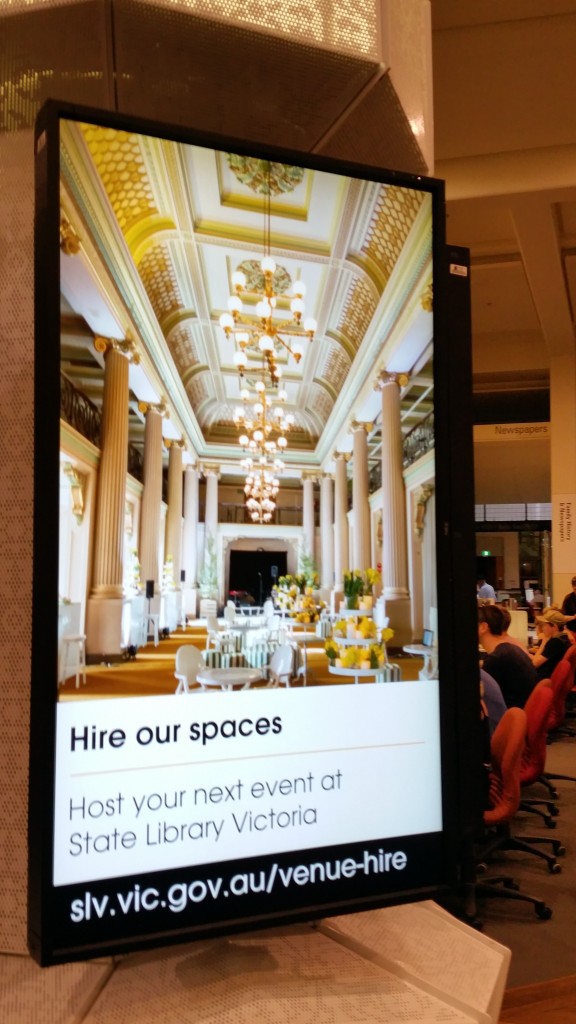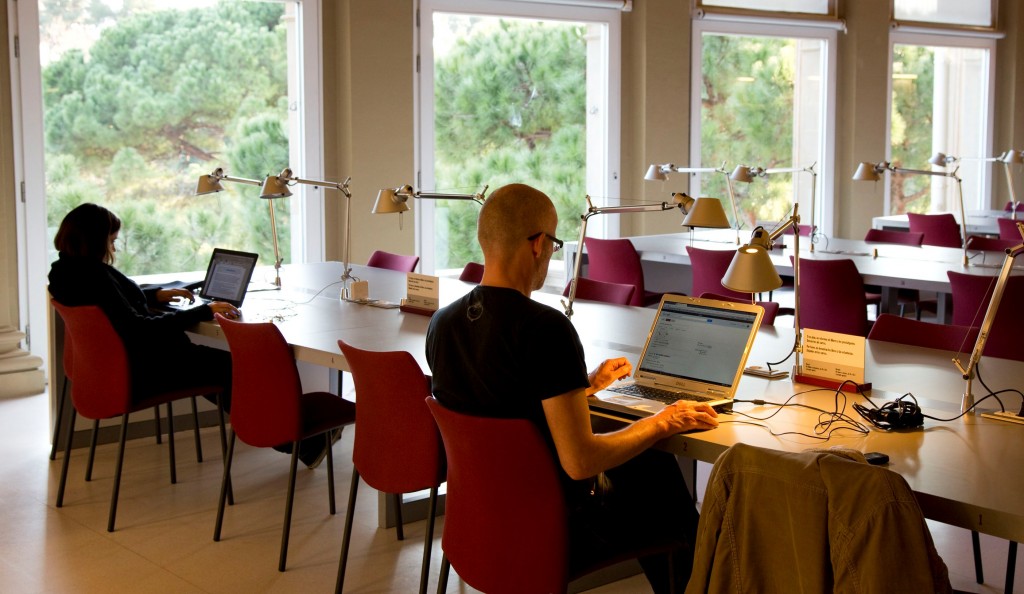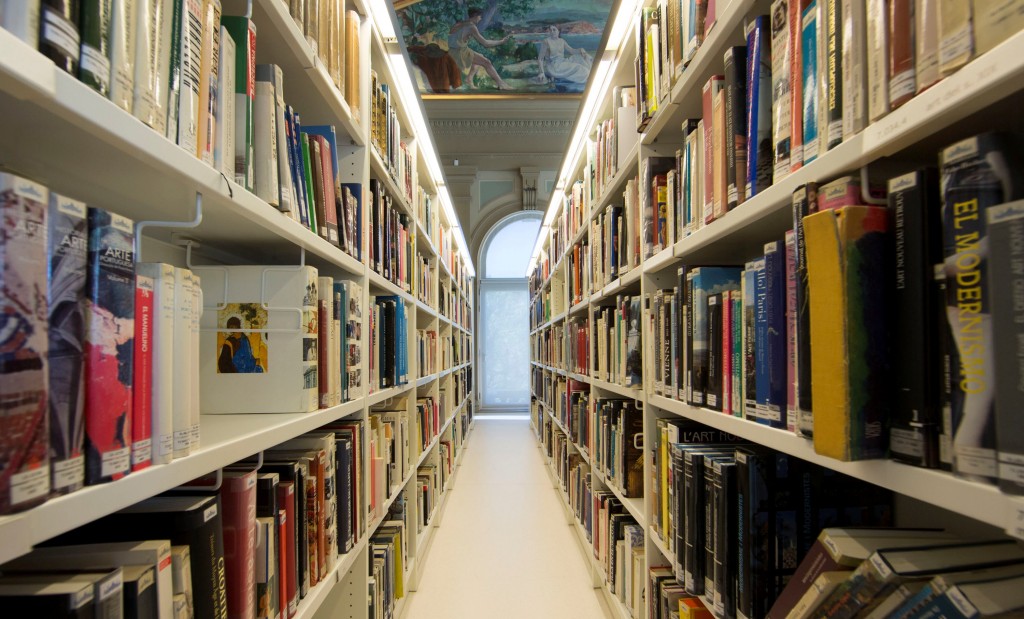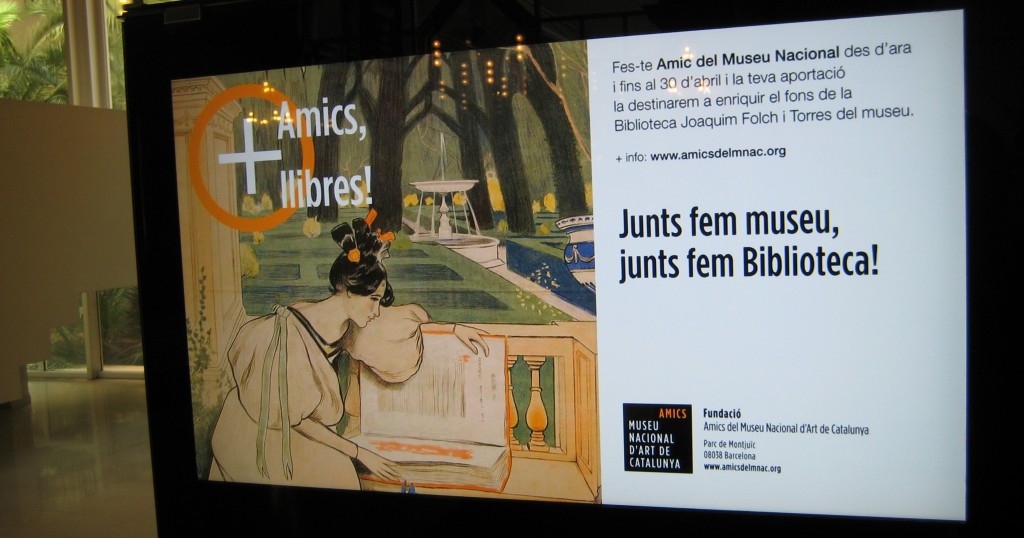Jana Soto
As we explained in the post Museum libraries: the great unknown, this type of library, historically, has not enjoyed great visibility outside its museum’s walls. Each library and its staff are responsible for carrying out the actions needed to showcase the centre, as well as communicating its resources and services to the general public.
Modern times involve new actions and continuous adaptation to an environment in constant change, if we do not want to become a library that is invisible to society. At times these changes are slower than would be desired, and they may also be based on better or worse choices. What is true is that we have not progressed as a society by doing what has always been done, and progress requires innovation and risk-taking. Our spaces, experience and skills as librarians must be placed at the service of users and, thus, we must employ both physical and digital resources in order to construct the library they need.
We will present here some ideas here that may be innovative in the arena of museum libraries and that can be carried out from each centre at a relatively low cost. Naturally, the more financial and human resources allocated to them, the better the results that will be obtained. With inter-library cooperation and by joining forces, excellent results can be obtained.
Some of these actions are already being done in other museum and/or country settings, although they may not be widespread among museum libraries. If we want to set a difference, it could be good to outline actions of this type or similar, always bearing in mind each centre’s characteristics and resources.
Digital technology
In our modern age, the use of technology is vital for reaching a larger audience. If has become part of our lives and we cannot conceive of a world without it. At libraries, we are aware of this and technology has been part of our daily work lives for a long time already (online catalogue, social networks, digitisation of documents, use of RSS, etc.). Museum libraries were one of the first services at museums to be computerised, making their bibliography catalogues available online.
Here some ways that can facilitate the lives both of users and librarians:
WhatsApp to answer users’ queries and also as a mailing list. In Spain, WhatsApp is starting to become more widespread in the setting of university libraries. Its use at any library is extremely low cost and, therefore, it can easily be applied to the museum library environment. In addition, queries can now be handled from computers, like it were an online chat, without having to use a mobile device.
Some examples include the libraries at the University of Las Palmas de Gran Canaria, University of Cadiz, University of Girona and the Jaume Vila County Library in Mollerussa.
Online chat: Like the use of WhatsApp, online chats let us respond to users’ queries and questions from a computer. There is free software that operates with the most popular CMS (Content Management System), such as Drupal modules: DrupalChat or My Live Chat, and a channel of communication can also be opened with the Google tool Hangouts. With regard to payment options, there are very good ones at affordable prices, such as Zopim, Luckyorange and Live!Zilla, which operate with any CMS.
Writing and mailing of a newsletter with information of interest on the library: activities, resources, opening hours, news, etc. In the business world and at many types of libraries, this action would not be innovative in any way, but museum libraries do not seem to make intensive use of mailings, particularly for external users.
Augmented reality: this technology consists of adding virtual information to physical spaces, required an internet connection for operation. Some uses that could be advantageous at libraries are:
- location maps: by pointing to a section of the room with a mobile device, instructions could be displayed on the subjects of the documents on the shelves
- enriching a museum exhibition catalogue or the library brochure, as shown in this video from the Muskiz Public Library
https://www.youtube.com/watch?v=g6bsFgFiGj8
One of the most popular ways to implement this technology is Layar, which can be used free of charge, although the best features must be purchased via payment options.
Mobile applications: many libraries already have mobile applications to facilitate users’ access to information: activities, news, resources, opening hours, access to catalogue. Mobile applications for libraries have proliferated, especially in university settings, at which they have had the support of IT students to develop them. Their application at museum libraries is not easy, although training librarians how to use tools such as App Inventor has become increasingly accessible in recent years.
Beacons: beacons are sensors that emit signals with a short scope (some 50 metres) using Bluetooth technology. Content is distributed to users through an app installed on their mobile devices. Examples of possible uses at libraries would be:
- transmitting content on how to best use the library, activities, changes in opening hours
- help with locating a book in the consultation room or sending information on museum exhibitions, if the person is in the exhibition catalogue section
- creation of library user communities, facilitating the library’s interaction with users and, in parallel, creating dialogues among users about the institution.
In 2014, the Fayetteville Free Library in New York was one of the pioneers in making use of this technology, which did not end up reaching libraries as it had other areas like museums. The contents may be written text, images that are dragged or videos. Depending on experience, these types of library promotions can be very useful, as users can adapt the content to their interests and specific needs. In this case, they work with the company Bluubeam, which has a portal for content management, with an extremely user friendly interface.
Some advantages of beacons are: low cost, quite non-invasive technology, small design size that is easy to install anywhere in the library, no internet connection is needed as it operates via Bluetooth, and low battery consumption of mobile devices.
QR codes: this technology has already been present among mobile users for quite some time. We can see them at shopping centres, on product packaging at the supermarket, on posters at the cinema and theatre. Many libraries have used these codes as a method for conveying information and/or providing access to contents. Their use is simple and economical.
An interesting initiative was carried out at MUSAC Library, which proposed placing printed QR codes around the city of León, for a BookCrossing convention motivated by the World Book Day. These QR codes connect to the link for a book on art, culture, museums, and the like, with the option of legally reading and downloading it, open and free.
At our Joaquim Folch i Torres Library, we make use of these codes on materials that we create for different reasons, such as the brochures: Romanesque at the Museu Nacional d’Art de Catalunya: origins, museology, study and divulgation (PDF) or Homage to Joaquim Folch i Torres on the fifty year anniversary after his death (PDF).
Some examples on how to use QR codes in libraries can be found at QR Codes in Libraries: Some Examples.
Virtual exhibitions: virtual exhibitions let us publicise the collections, providing a new value to the documents through discourse on the exhibitions. With platforms like Omeka, the library can implement a manager to create virtual exhibitions, in a relatively easy and economical way. CMSs like Drupal or Joomla can also be used to create virtual exhibition spaces. The latter is the one we use. Via the Drupal website and using a template created for this purpose, we periodically publish exhibitions like these:
Museu Nacional Library: the collections in images
Collaborative projects: crowdsourcing consists of asking for help from the community to develop projects. In this case, help from people with knowledge in the speciality of the specific project is sought, even though everyone is invited to lend a hand.
A good example of this in the area of libraries is the project Transcriu-me!!, promoted by the Biblioteca de Catalunya that—in broad terms—consists of making transcriptions of digitised heritage documents that cannot be transcribed using automated processes.
Competitions: organisation of contests, such as photography on Instagram, where participants can publish photos of themselves in different parts of the library or museum reading books. Many libraries do these types of activities, also on Twitter and Facebook.
A couple examples of competitions are Concurs fotogràfic #espaislecturaBCN a Instagram (video) organised by the Biblioteques de Barcelona and the Concurs d’Instagram promoted by the Public Library in Montgat (Barcelona).
Original videos to explain different areas of how the library operates in a friendly and entertaining way. One interesting example is the University of Copenhagen Library, which explains how it runs to students using Lego characters:
Onsite activities
Several ideas are presented here that require the presence of personnel or must be done during the library opening hours. Some of them do employ technology and they could therefore fit in the previous section:
Flash mob: an artistic expression that consists of a fast and surprise action organised in a public space. There are a slew of libraries around the world that have joined the flashmob fashion at some point. Why not do one at museum libraries on a specific day? It would give us publicity, give an image of a different sort of library, value our users by giving them a gift of a unique experience and move totally away from the normal day-to-day of silent and calm reading rooms in a truly original way. Here are a few examples:
Flashmob at Valladolid Public Library, June 2012
Harry Potter Flashmob at University of San Diego
Roving librarian: with a laptop, a tablet or nothing in hand, simply approach users and ask them: ‘Can I help you?’ This could be planned for within the institution or leaving the museum to go to universities or neighbourhood libraries. Another variation would be to set up a ‘stall’ with a librarian in the museum lobby to attend to the public. We could plan to have a librarian in the museum lobby during specific times or days, with a selection of documents to inform people about the library and its collections.
Holding of workshops and/or video tutorials on digital tools for internal and external users, such as: How to create a blog, how Twitter, Wikipedia, Evernote work, managers of bibliographic references like Zotero and RefWorks.
Museum librarian visit schools: to train both teachers and students.
Introduction to the figure of the content curator: Provide an added value to museum library users with the figure of the content curator, as a knowledge broker. In other words, this professional would select high quality contents for users, selecting content considered relevant and pertinent for their tasks and discarding those that are not. The professional in charge of this task must be a content curator specialist in their field of expertise, and must have mastery of different digital tools, to be able to select and disseminate information.
Promotions: give a merchandising product from the library or museum as a free gift to, for example, the first five users on World Book Day.
Fundraising
Since we are going through tough times, here we outline a few options for obtaining extra resources:
Hiring of spaces for events: Julian Marquina makes a somewhat daring suggestion in his article: I’m getting married at a library! That some libraries have already implemented (the New York Public Library and the Boston Public Library).

Hire spaces at the State Library of Victoria (Australia)
Organisation of fundraising campaigns, like what we did for our library in 2015: Friends + Books! What we did to acquire new books for the museum library.
Book presentations of ones that are of interest in exchange for donating the book being presented.
Design and sale of library merchandising at the museum shop.
Some great innovative actions can be applied at our Museum Library, the Joaquim Folch i Torres Library to head toward a new museum library model. To do so, firstly we must draw up our own strategic plan, which defines the direction in which the library is moving, as well as a marketing and promotion strategy that will establish the lines to follow and provide continuity to the actions carried out.
I bet that are loads of other innovative actions that can be done at museum libraries or at other types of libraries. Do you know any others you’d like to share?
Related links
Transformación digital en la biblioteca universitaria, webcast by Javier Leiva
Biblioteca del Museu Marítim de Barcelona, blog (in Catalan)
Qué son los códigos QR y cómo se pueden utilizar en bibliotecas, Jana Soto.
Cómo usar las encuestas de Twitter si eres una biblioteca, Julián Marquina
Red de Bibliotecas de Museos (BIMUS)
Biblioteca










